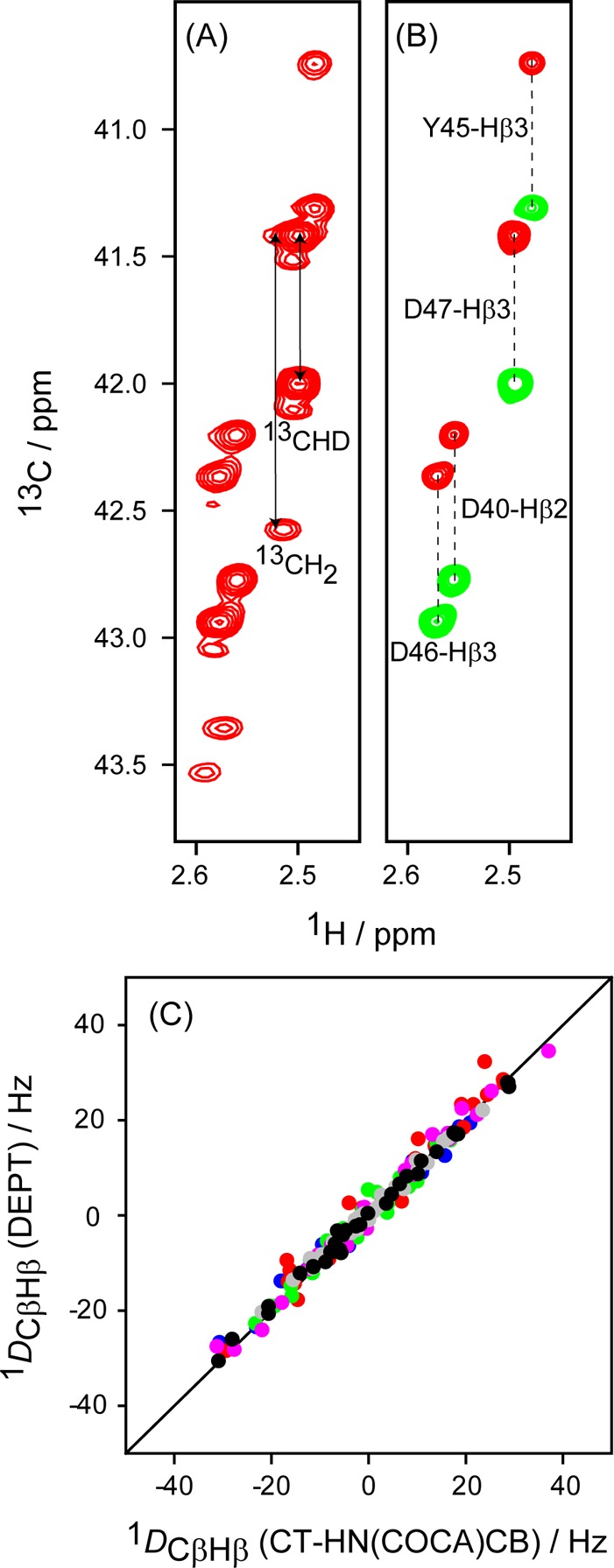Figure 1.

Enhanced accuracy of 1DCβHβ couplings through spectral editing of the 1H–13C CT-HSQC spectrum of randomly fractionally (75%) deuterated GB3. (A) Small region of the regular 1H–13C HSQC spectrum, 1H-coupled in the 13C dimension, showing the signals of both 13CH2 and 13CHD isotopomers, the latter upfield shifted due to the deuterium isotope effect. (B) Same spectral region, recorded with the DEPT-filtered 1H–13C CT-HSQC experiment (SI Figure S2), which selects 13CH signals and effectively suppresses 13CH2 isotopomers. (C) Comparison of the sum of 13Cβ–1Hβ2(Dβ3) and 13Cβ–Hβ3(Dβ2) couplings derived from the DEPT-filtered HSQC spectra of wild-type GB3 in Pf1 and isotropic solutions, with the corresponding summed couplings derived from CT-HN(COCA)CB spectra. Blue: K4A/K19E/V42E-CHis6 in Pf1; red: K19A/V42E/D47K in Pf1; green: K4A/K19E/V42E in Pf1; pink: wild-type GB3 in bicelle; gray: wild-type GB3 in PEG; black: wild-type GB3 in Pf1. Spectra were recorded at 900 MHz 1H frequency in 99.8% D2O (1H–13C HSQC) and at 600 MHz in 95% H2O for the CT-HN(COCA)CB experiment.
